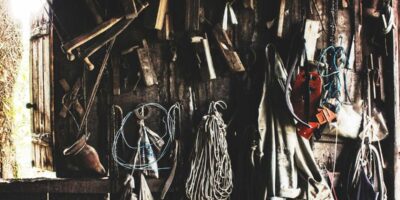Exploring Rare World War II Knives
World War II left an indelible mark on history. Among the relics from that era, knives stand out. Soldiers carried these tools daily. They served practical and combat purposes. Collectors and historians find these artifacts fascinating.
Types of WWII Knives
World War II saw a variety of knives designed for specific needs. Each knife had a unique role. Let’s delve into a few rare types.
Fairbairn-Sykes Fighting Knife
The British Commandos used the Fairbairn-Sykes fighting knife. Developed by William Ewart Fairbairn and Eric Anthony Sykes, it featured a double-edged blade and a slender design. The knife was ideal for close combat. Its balance allowed for swift, precise strikes.
M3 Trench Knife
The U.S. Army introduced the M3 Trench Knife in 1943. It replaced the earlier M1. Designed primarily for combat, it featured a narrow, double-edged blade. The handle had stacked leather rings for a secure grip. Paratroopers often carried the M3. Its design catered to soldiers in tight combat situations.
Ka-Bar Knife
The U.S. Marine Corps favored the Ka-Bar. Known formally as the 1219C2, it was robust and versatile. It featured a 7-inch blade suited for fighting and utility tasks. A single edge with a clip point allowed for efficient puncturing. The leather handle provided a reliable grip, even when wet. Marines cherished this knife for its durability.
Hirschfänger Knife
Some German servicemen carried the Hirschfänger. Primarily a ceremonial piece, it still saw use in the field. The long, ornate blade pointed to its hunting origins. Officers and certain elite units used it. While not as practical in direct combat, it held symbolic value.
Materials Used in WWII Knives
Materials played a vital role in knife manufacturing. Different materials influenced a knife’s effectiveness, durability, and weight.
Steel Alloys
Steel was the primary choice for blades. Carbon steel was common for its sharp edge retention. Some knives used stainless steel, offering rust resistance. The exact composition varied by manufacturer and country. Each blend had its advantages and drawbacks.
Handle Materials
Handle materials varied widely. Leather was common for its grip and comfort. Some knives featured bakelite, a lightweight plastic. Wood appeared in some models, offering traditional aesthetics. Each material’s properties influenced the usability of the knife.
Production and Distribution
Large-scale production was essential during WWII. Factories had to meet the massive demand for knives.
American Production
Companies like Camillus, KA-BAR, and Case manufactured knives en masse. Factories operated under government contracts. Production focused on efficiency and quantity. Factories rapidly adapted to war needs, altering civilian products to meet military specifications.
British and Commonwealth Production
Various firms across the UK produced knives like the Fairbairn-Sykes. Each firm added slight modifications, creating variants. Commonwealth nations also contributed to production efforts. These collaborations enriched the diversity of available knives.
German Manufacturing
German companies produced an array of knives. Some firms had deep roots in sword-making, such as Solingen manufacturers. They applied traditional techniques to modern military needs. Production was systematic, ensuring weapons met Nazi specifications.
Japanese Knives
Japanese soldiers carried bayonets and knives. They often reflected samurai influences. Blades were sometimes simple, other times ornate. Production focused on cultural pride intertwined with military function.
Collectibility and Value
Collecting WWII knives is a dedicated hobby. Several factors determine a knife’s value.
Rarity
Rarity drives up a knife’s desirability. Models produced in limited quantities are often sought after. Unique features or production variances add to rarity.
Condition
Pristine condition boosts value. Corrosion, handle damage, or blade wear decrease interest. Proper conservation is crucial.
Historical Significance
A knife with a documented history can be invaluable. Provenance, or the story behind the piece, enhances its worth. Knives linked to notable battles or figures command higher prices.
Authentication
Fake knives abound on the market. Authentication by experts remains crucial. Knowledgeable collectors can identify tells of counterfeit items.
Preservation and Care
Proper care ensures a knife’s longevity. Preservation techniques prevent deterioration.
Cleaning
A gentle cleaning with a soft cloth removes dirt and oils. Avoid harsh chemicals. Oil can prevent rust on steel blades.
Storage
Store knives in a dry, stable environment. Moisture and humidity accelerate rust and degrade materials. Proper holders avert accidental damage.
Display
Displaying knives in cases allows viewing without handling. Ultraviolet light can fade certain handles, so consider UV-protective glass.
Conclusion
World War II knives tell stories beyond their metal and wood. They reveal history, culture, and the personal experiences of those who wielded them. As collectors and enthusiasts explore these tools, they connect with a past era in rich detail. Each discovery brings with it the echoes of those who lived through one of history’s most challenging times.

